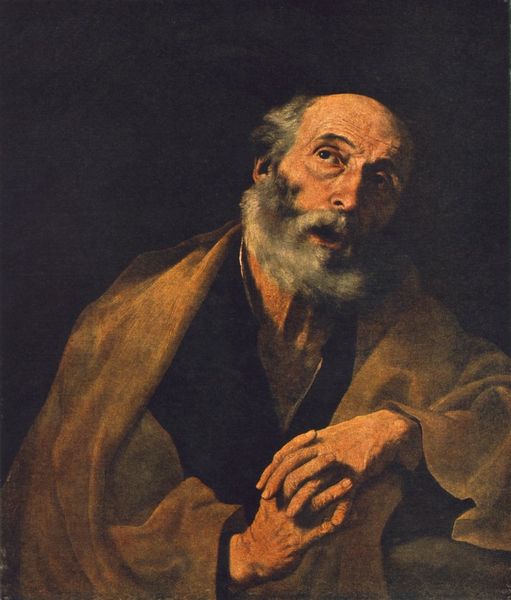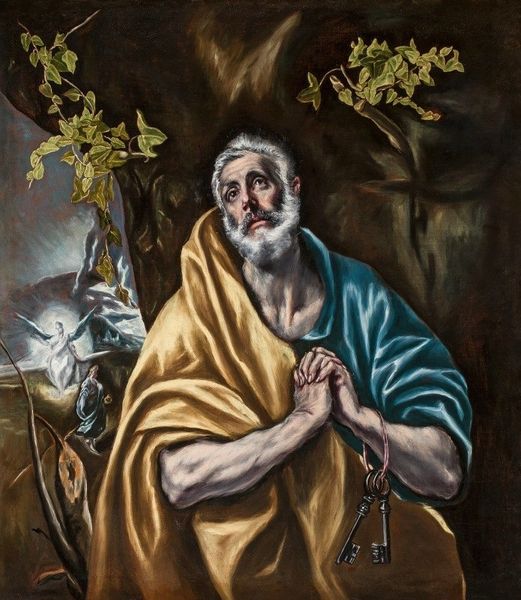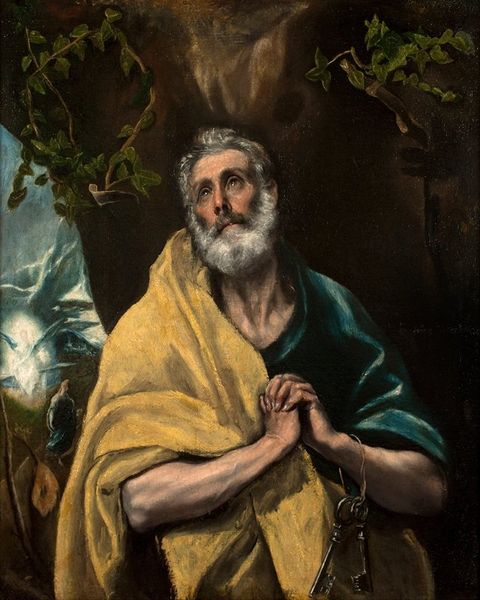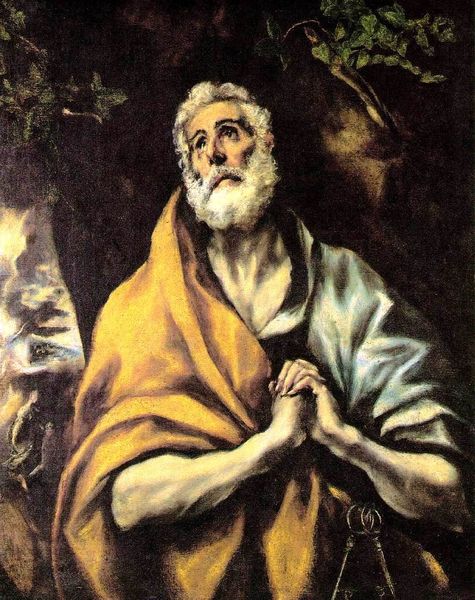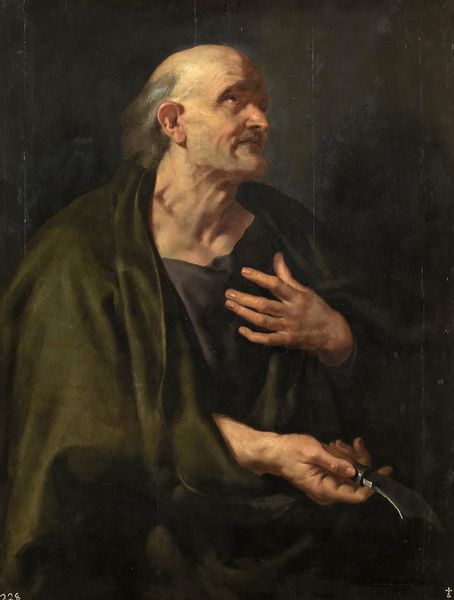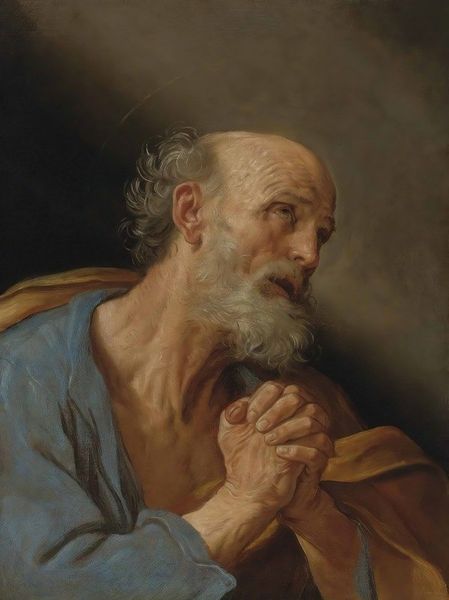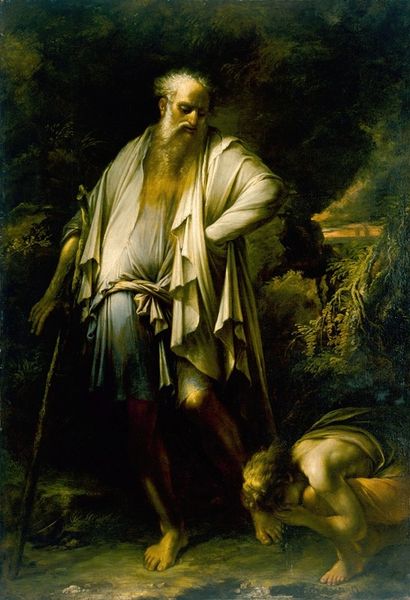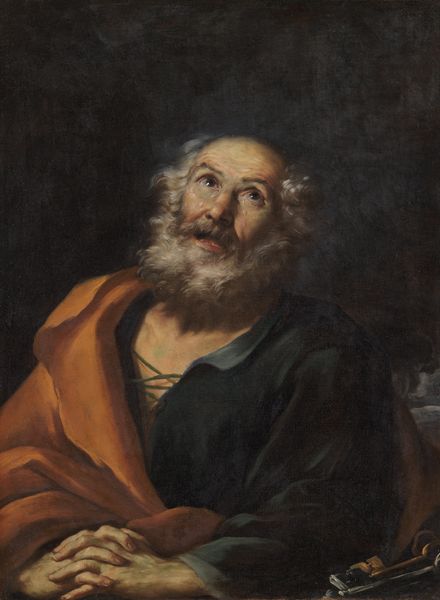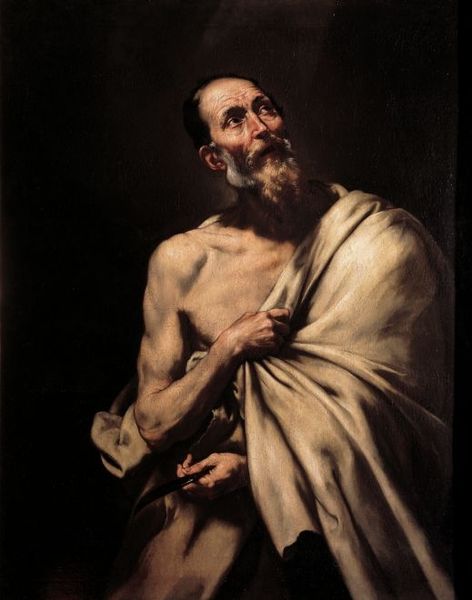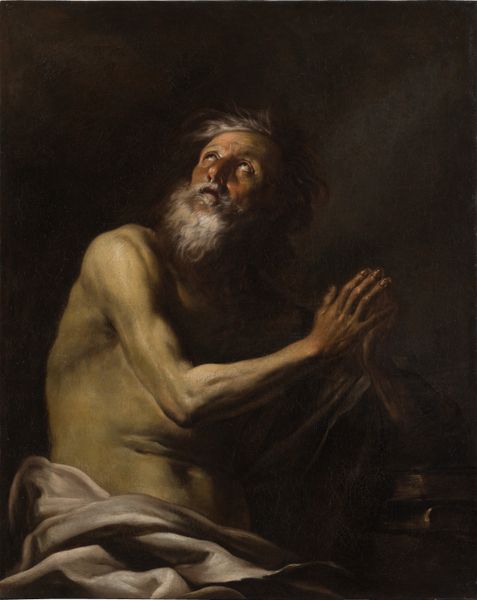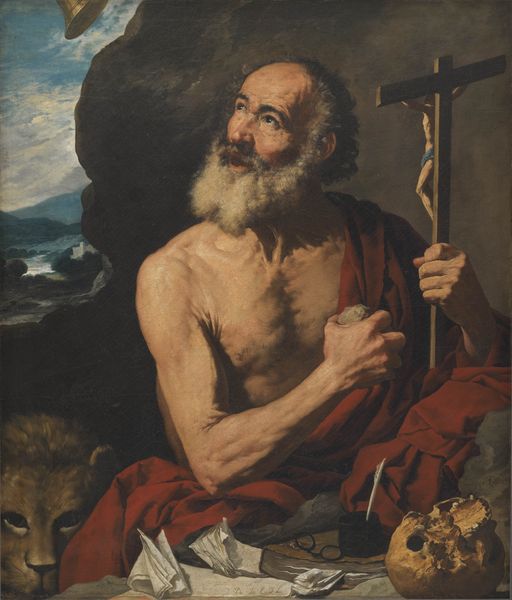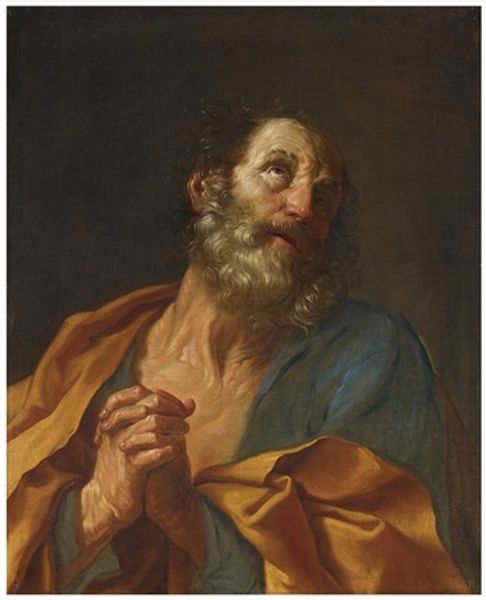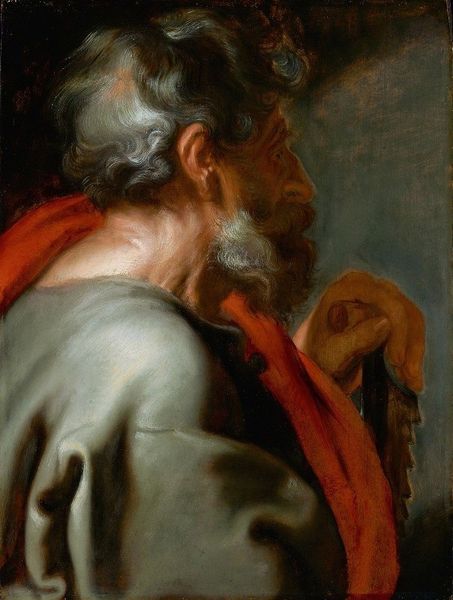
painting, oil-paint
#
portrait
#
portrait
#
painting
#
oil-paint
#
mannerism
#
christianity
#
history-painting
#
italian-renaissance
Dimensions: 109 x 90 cm
Copyright: Public domain
Curator: Today, we are observing El Greco's "St. Peter in Penitence," painted around 1585. The work is currently housed at the Bowes Museum. Editor: My first impression is one of intense emotion. The figure is so dramatically lit, and those eyes—they convey a deep sense of sorrow and supplication. Curator: The drama certainly emerges from the stark contrast of light and shadow, a technique that guides our gaze. Observe how the painter manipulates the very materiality of the oil-paint medium to direct the viewer's perception through compositional tension and carefully calibrated use of chiaroscuro. Editor: Looking at the composition, I can't help but consider the social and religious implications. The positioning of Peter with his hands clasped in prayer points to his repentance, influenced by the Counter-Reformation's emphasis on contrition and the saint’s significance. The background landscape adds symbolic weight, perhaps referencing Peter's past. Curator: Exactly, the figure’s anatomy is not realistically rendered, elongated limbs typical for El Greco. This artistic distortion serves a greater purpose than mere representation, underscoring the figure’s spiritual transport. And let’s note the chromatic range employed in the landscape and robe, a rather expressive treatment, enhancing the emotive power within the composition. Editor: It's impossible to ignore how paintings like these shaped—and were shaped by—the theological discourses of the era. The dramatic use of light, combined with Saint Peter's expression, becomes a tool, engaging the public's faith through highly emotionally-charged imagery, something carefully monitored by powerful figures like the Spanish clergy. Curator: Yes, the formal qualities harmonize perfectly with the religious subject. This synergy reveals El Greco's genius, highlighting spiritual contemplation through a dynamic interplay of form, line, color, and surface, which leads to our personal interaction with the portrayed experience. Editor: Analyzing art always invites an inquiry beyond brushstrokes. Examining the historical setting encourages a larger examination of intention and impact, both elements enriching our viewing of paintings. Curator: A perspective worth bearing in mind when examining art and technique.
Comments
No comments
Be the first to comment and join the conversation on the ultimate creative platform.
